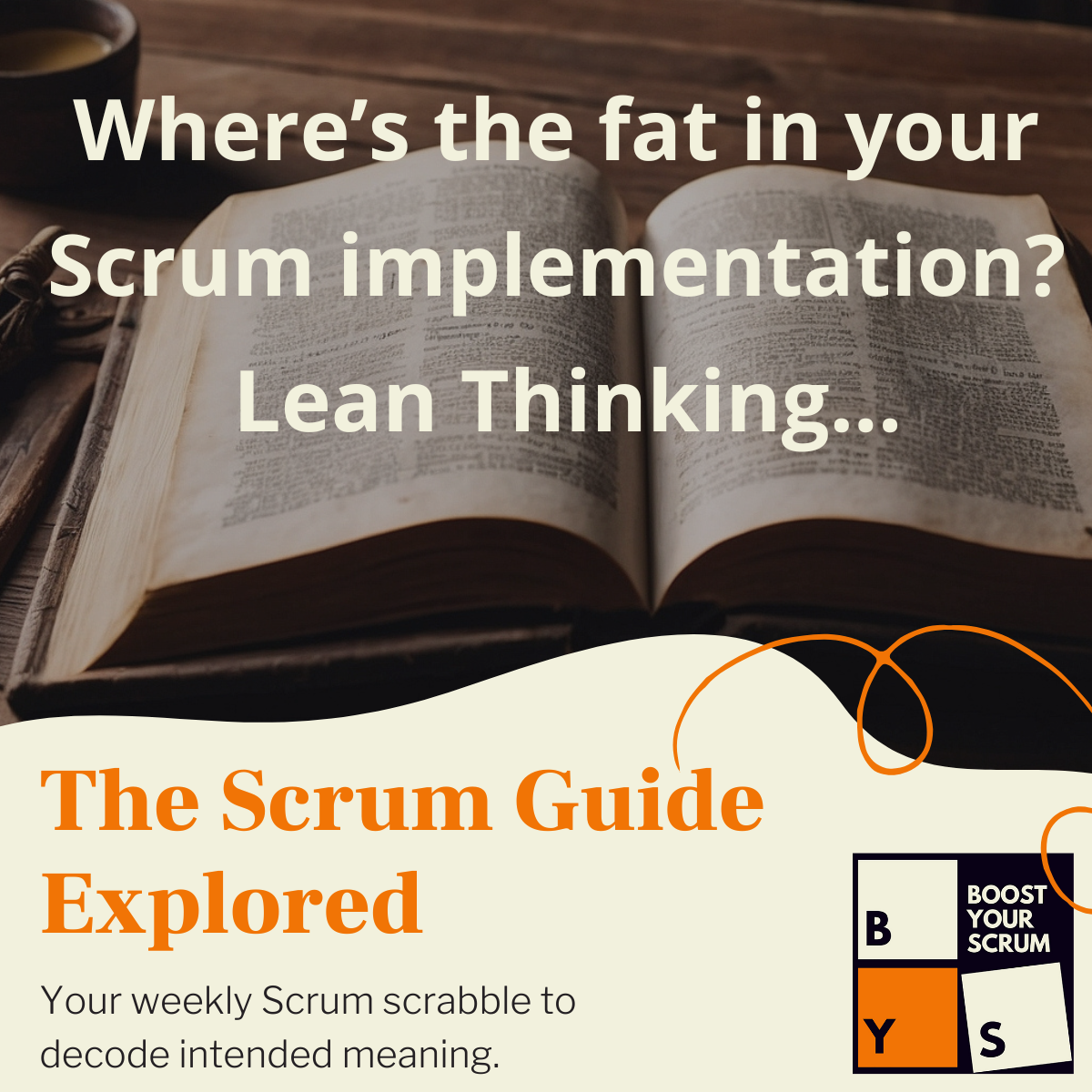Where’s the fat in your Scrum implementation?
The Scrum Guide says:
“Scrum is founded on empiricism and lean thinking.”
In an earlier post, we unpacked empiricism. This time: lean thinking.
From the Scrum Guide:
“Lean thinking reduces waste and focuses on the essentials.”
From Cambridge Dictionary:
Lean: “looking healthy and without much fat”
Thinking: “the process of using your mind to understand matters, make judgments, and solve problems”
That’s what Scrum teams do: they cut the fat, focus on value, and think clearly about what’s actually needed to deliver results.
But lean doesn’t mean undernourished.
It means healthy. Fit. Focused.
Here’s what lean looks like in a Scrum context:
- A Product Backlog with just enough detail for the next 2-3 Sprints—not 300 items deep “just in case”
- A Sprint Backlog shaped for focus and flow—not crammed with guesswork that will change anyway
- Scrum Events where people split up to explore in parallel, then regroup to share—not wasting 7 brains on 1 task for an hour
Lean thinking helps teams remove complexity before it becomes a problem. Simplification.works.
And it encourages us to think—not just follow steps. It’s about value, not volume.
Lean thinking questions to reflect on:
- What are we doing out of habit, not value?
- Where are we over-preparing instead of learning as we go?
- What part of our Scrum implementation feels heavy—and what could we safely strip out?
Scrum helps teams deliver better outcomes with less waste.
Lean thinking is the mindset that makes this possible.
Interested to hear from you:
- Where in your team or organisation is lean thinking clearly visible?
- And where does the fat still need trimming?
I’d love to hear your thoughts in the comments below!
I hope you find value in these short articles and if you are looking for more clarifications, feel free to make contact.
Don't want to miss any of these blog posts? Have the “The Scrum Guide Explored” series weekly in your mailbox.
Wishing you an inspiring read and a wonderful journey.
Scrum on!

